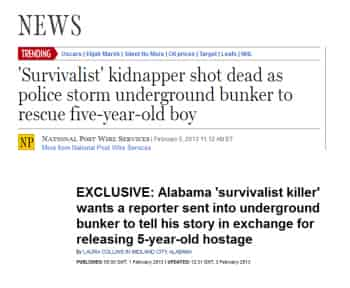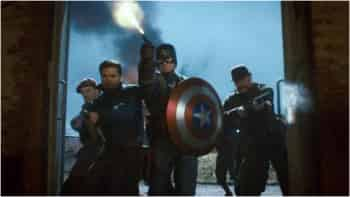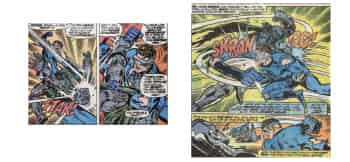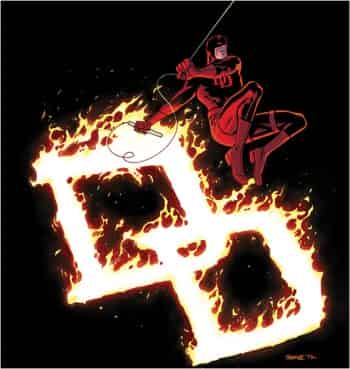
Inspiration
The art of the review
To dive in and write, one has to either be unaware or believe we can offer readers a distinctive voice. So in that sense we have already passed judgement on the work of other authors. We talked about this in our list axioms.
On a similar note, we came across this complaint by Anthony Falcone: “I’ve been reading a lot of comic book reviews while prepping this article and while I won’t provide any links (I’m not trying to call out specific writers here), I will say that the majority of them are mostly story summaries with brief discussion of the art. If the review is positive there will be some sort of acknowledgement of the artist’s skill, but if the review is negative the art will be briefly dismissed with an amusing quip. At times an artist will receive a negative comment on the neutrality of their work; it is functional, satisfactory, or pedestrian.” (Anthony Falcone, “Accentuate the positive, eliminate the negative?,” October 10, 2013, http://www.comicbookdaily.com)
The Internet doesn’t foster constructive dialogue, since negative and incendiary comments are the ones that get attention. So we really appreciate reviews that have some breadth, that don’t limit their comments to the title being reviewed but rather looks at it (or its writer or genre) in context, or that adopt a unique point of view, one that isn’t commonly heard. For instance, some of our favourites are the team at A.V. Club for TV, some writers at Badass Digest for movies, Christine Duffee for her work on Daredevil, Darren for film (and comic books) and Sylvain Lavallée for comic books.
Drawing inspiration from reality: the origins of our story “The kidnapping”
Our story “The kidnapping” was inspired by real events that took place in Alabama in February 2013, when a boy was kidnapped by a survivalist and held captive in a bunker. We went so far as to mimic the appearance of the real-life kidnapper. From these actual events, we developed a fiction that fit nicely into the story line we were developing.
Interpreting Captain America
We’ve confessed it before and we’ll say it again: Captain America was (is still) our favourite superhero. When we saw the first movie Marvel dedicated to him, we felt uncomfortable seeing him holding a gun, but we couldn’t quite figure out why. Then we came across this interpretation by Chris Sims. We totally agree with his analysis:
“One of the things I really like about this story is how much importance Kirby puts onto the idea of Cap’s shield as a symbol. I love that, because it underscores one of my favorite things about the character: He’s a soldier who doesn’t carry a gun. He carries a shield, because he exists to protect and defend people against the forces that would hurt them. It’s one of the most elegant ideas in comics, and something that I think really plays into Kirby’s idealized vision of what America should be […] It’s a big symbol, and in Cap’s view—and Kirby’s—that symbol has a lot of power. “(Chris Sims, “Ask Chris #156: KILL-DERBY!” July 5, 2013, http://comicsalliance.com.)
Reading this, we wonder if the creators had all those ideas explicitly, or if these concepts were unconscious and only waiting to emerge. The second Captain America movie (“The Winter Soldier”) was much more consistent with this definition of Cap’s character.
The vagaries of writing (The Kidnapping)
We didn’t really know how we were going to end this story. Would Woolf kill himself? Would the little boy shoot his kidnaper? Would the police launch an assault? We were hesitating between these options, knowing only that, in the end, the boy had to get out safely, and that this story was only the beginning of a longer story arc.
Where did the name Noren come from?
Namor is Roman spelled backwards. We used the same approach, reversing the names of famous people, to name some of our characters. Noren is Neron (the French spelling of Nero) spelled backwards.
References in the story “See Vienna and Die”
The backdrop for this story was inspired by a February 2010 article by Blaise Gauquelin that appeared in L’Express magazine: « Vienne, nid d’espions de Téhéran, » which talked about Vienna being a nest of Iranian spies. We transposed the article’s contemporary feel for an early 80s Cold War setting. The article mentions the feeling of abandonment felt by Austrian authorities vis à vis their NATO allies, and uses this to justify a policy of cooperation.
Comic books from the 70s
A lot of people judge American comic book writers from the 1970s harshly. Alan Moore was one of the fiercest critics of the early 80s. (“Alan Moore’s Lost Stan Lee Essay,” 1983, part 2 of 2). We consider the Silver Age to be a period in which the various elements in comic books were kept in check. The dialogue wasn’t overly explanatory, the descriptive boxes offered access to another level of story, and we hadn’t yet sunk to psychologically hyperanalyzing the characters. Here is a page from issue 200 of the Fantastic Four, written by Marv Wolfman, where we find such a balance.
Mark Waid
Mark Waid is an author we only got to know recently through his work on Daredevil, which really impressed us. His stories seem almost “anticlimactic.” For example, in the seventh issue, Daredevil faces a snowstorm. And issue 12 is focused on the time when Matt and Foggy were studying law and had a confrontation with their teacher. The fight scenes are relatively short and rarely occupy a whole issue.
Curiously, without seeming spectacular at first glance, Mark Waid’s writing is stimulating and these issues are some we often reread. We also recently learned that Mark Waid doubles as a thinker on the impact of the Internet on comic production.
References in the story “At Large”
In “At Large,” Jason makes his way to Vancouver without a penny in his pocket and has to come back in a few days with a certain amount of money. We heard many years ago that Canadian secret service recruits were given such a task.







